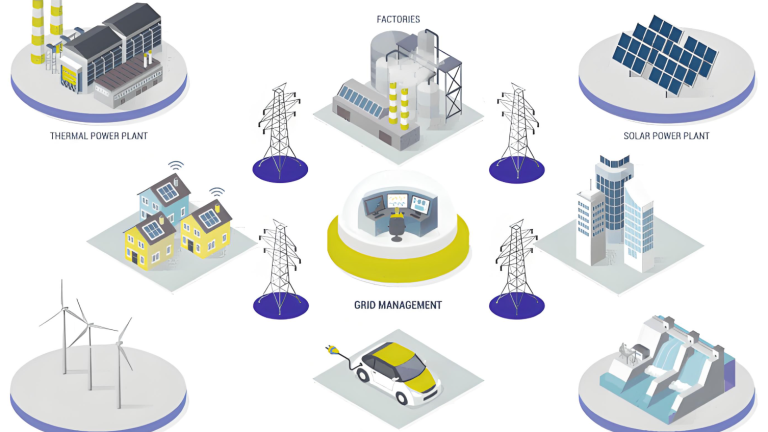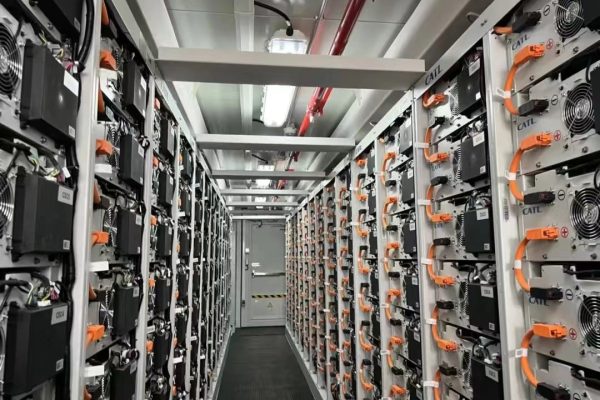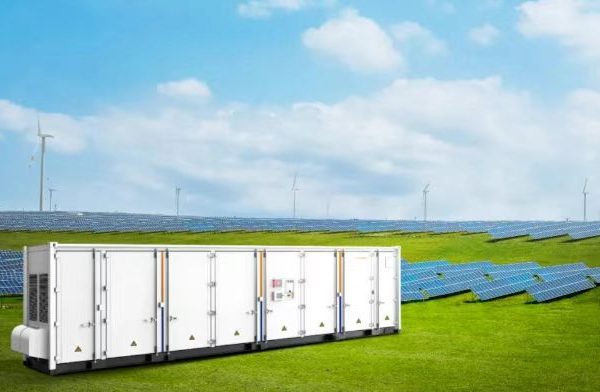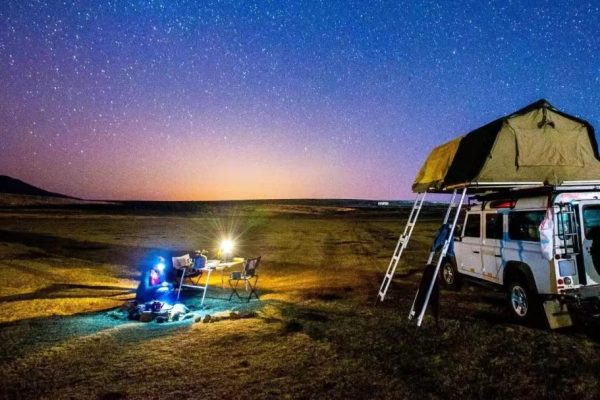In the energy storage and solar industries, the Single Line Diagram (SLD) is a critical tool for communicating system architecture, electrical flow, and component interconnection. For international trading professionals dealing with hybrid inverters, battery systems, and integrated PV+ESS solutions, understanding how to interpret an SLD can be the difference between closing a deal and losing trust.
This article explains what an SLD is, its typical structure, key symbols, and how foreign trade partners—especially those in technical sourcing or system integration—can use it to understand project scope, quote accurately, and communicate effectively with installers and buyers.
1. What Is an SLD (Single Line Diagram)?
An SLD (Single Line Diagram) is a simplified electrical schematic that shows the major components in a power system and how they are electrically connected using single lines and standard symbols.
In residential or C&I (Commercial & Industrial) PV + ESS projects, an SLD typically includes:
- PV modules
- Inverters (string or hybrid)
- Energy storage systems (battery packs, BMS)
- AC/DC switchgear and breakers
- Loads (critical/non-critical)
- Grid connection or generator
- Protection devices (SPD, fuses, isolators)
- EMS or controller
Although it simplifies the physical wiring, an SLD captures the functional flow of electricity and serves as the foundation for electrical design, installation, and compliance.
2. Why Foreign Trade Professionals Must Understand SLDs
Most importers, project owners, or EPC contractors rely on trading partners for early-stage support—especially in small and mid-sized projects. Here’s why understanding SLDs is essential for technical trading teams:
- ✅ Clarify System Scope: Know what you’re quoting—off-grid? hybrid? grid-tied?
- ✅ Match Equipment Specs: Ensure voltage, current, and power match between components.
- ✅ Prevent Costly Misunderstandings: Avoid wrong selections of inverters, batteries, or protection gear.
- ✅ Build Technical Trust: Speaking the “language” of system design impresses engineers and project developers.
- ✅ Enable Fast Response: Quote quickly when the SLD is your roadmap.
3. Core Sections of a Typical PV + ESS SLD
A complete SLD for a residential or small C&I energy system generally has 3 major parts:
A. DC Side – Solar and Battery
- PV Array: Represented by one or more strings, often with labels like “10 × 550W modules”.
- MPPT Inputs: Shown at the input of the hybrid inverter or solar inverter.
- Battery Pack: Includes nominal voltage (e.g., 51.2V or 512V), capacity (kWh), and sometimes communication lines (CAN/RS485).
💡 Related reading:
👉 How to Match a Battery Pack with a Hybrid Inverter
B. Inverter/PCS (Power Conversion System)
- Hybrid Inverter or PCS: Converts DC from solar/battery into AC for loads or grid.
- Grid-Tied Point: Shown as a breaker or AC point connecting to the utility.
Typical labels to watch:
- Rated output power (e.g., 5kW, 10kW)
- Output voltage (e.g., 230V/400V)
- Grid phase (single/three-phase)
💡 Related:
👉 How to Choose a Hybrid Inverter for Small-Scale PV Projects
C. AC Side – Loads and Grid
- Critical Loads Panel: For appliances needing backup during outages.
- Non-Critical Loads: May bypass the battery system.
- Metering: Smart meter or CTs (current transformers) shown for monitoring.
- Grid Connection: Usually with a disconnect switch and overcurrent protection.
4. Common Symbols in SLDs (and What They Mean)
| Symbol | Meaning | What to Check as a Trader |
|---|---|---|
| → | Direction of power flow | Confirm power source and load order |
| ◉ | Circuit breaker | Sizing and type (AC/DC) |
| ▭ | Inverter or battery system | Match specs to quote |
| ≡ | Busbar or connection point | Note connection sequence |
| ⚡ | Surge protection device (SPD) | Required in most export markets |
| 🔋 | Battery module or string | Nominal voltage/capacity |
5. Key Things to Look for When Reading a System SLD
Here’s a practical checklist when evaluating a project SLD as a trading partner:
| Item | What to Look For | Why It Matters |
|---|---|---|
| ⚙ System Type | Grid-tied, off-grid, hybrid? | Determines inverter type and battery needs |
| 🔌 Voltage Levels | PV input, battery nominal, AC output | For matching component compatibility |
| 🔋 Battery Specs | Capacity, voltage, communication | Select suitable BMS and cables |
| 🧠 Control System | EMS, BMS, communication lines | Ensures data/control compatibility |
| 🌐 Grid Connection Point | Export allowed? Grid backup? | Helps advise on system function & compliance |
| ⚡ Load Profile | Critical vs non-critical loads | To size battery properly |
| ☀ PV Array Size | Module count and orientation | Impacts MPPT input planning |
💡 Deep dive:
👉 Typical Daily Load Curve in Residential PV + ESS Systems
6. Real-World SLD Examples
Let’s consider two simplified examples:
Example 1: Grid-Tied Residential PV + ESS (5kW/10kWh)
System Features:
- 5kW hybrid inverter
- 10kWh LFP battery (48V)
- 6kWp PV array
- Grid-connected with backup for critical loads
SLD Insights:
- One MPPT input for PV
- Battery connected via DC bus
- Critical loads separated with ATS (automatic transfer switch)
- Grid export enabled with smart metering
Example 2: Off-Grid Remote Home System
System Features:
- 8kW hybrid inverter
- 20kWh battery bank
- 8kWp solar + diesel generator
SLD Highlights:
- Inverter handles solar + generator
- No grid connection
- Generator kicks in when battery SOC drops
- EMS monitors load priority and switching logic
7. Questions You Can Ask Clients Based on Their SLD
Use the SLD to show your technical understanding and ask relevant questions:
- “I see the battery is 512V—do you need CATL 100Ah modules or a rack-mounted unit?”
- “Do you plan to export excess power to the grid, or is this self-consumption only?”
- “Would you prefer CAN or RS485 communication with your EMS?”
- “Is this system using split-phase or three-phase output?”
These questions build trust, position you as a technical partner—not just a supplier—and open the door to value-added sales.
8. Internal Links for Continued Learning
For readers exploring PV + ESS systems further, check out:
- 👉 Key Parameters When Sourcing Hybrid Inverters for Export
- 👉 How to Design ESS for Peak Shaving and Load Shifting
- 👉 Choosing PCS (Power Conversion System) for Industrial Projects
9. Conclusion: Turn Diagrams into Deals
Reading an SLD might seem intimidating at first, but it’s simply a map of how the system flows. For technical trading companies working in solar and storage, the ability to interpret SLDs allows you to:
- Quote with precision
- Avoid misunderstandings
- Advise on better component matching
- Respond faster than large, slow-moving competitors
If your customer shares an SLD, don’t just forward it to engineering—read it, engage with it, and build trust.
Need help interpreting customer diagrams or preparing a system BOM?
We support hybrid inverter and battery system sourcing with full technical documentation and design review.









